By guest contributor Lidia Plaza
On my way to Covent Garden this summer, I spotted a Muji store and popped inside. A few months earlier I had picked up a pair of Muji socks in Terminal 5 of JFK, which had since become my favorite pair. Determined to acquire more, equally lovely socks, I studied the sock selection until I found some in the same style, size, and color as my beloved pair. I grabbed them and headed to the till. I didn’t bother to inspect the socks; I assumed the knit tensions were all perfectly even, the densities were consistent, the colors were identical. I also assumed that they were exactly like the socks I had purchased a few months earlier in New York. I didn’t compare the socks because I take consistency for granted. I expect it. I insist upon it. My expectation that socks I purchase from a Japanese retailer in New York will be identical to socks I find in London months later is a testament to the success of the Industrial Revolution.
In the history of the Industrial Revolution, the mechanization of cleaning, processing, spinning, and weaving textiles has become Chapter One of the gospel, but in this telling there has been undue emphasis put on the mechanization of manufacturing. The triumph of the Industrial Revolution was not the machines themselves, but the processes that could produce consistent products at a mass scale; machines were just one tool of those processes. This point is well illustrated in an often-overlooked verse of the gospel: dyeing.
Dyeing’s neglect is partially understandable, as dyeing is almost as difficult for the historian to study as it was for the eighteenth-century apprentice to learn. Unlike paints, dyes must chemically bond with the textile fibers, and variations in the fibers, the pH of the water, the quality of added mordants and dye-assistants, or even the composition of the containers used can affect the results. Only in the nineteenth century did chemists begin to understand dye chemistry, and when histories of industrialization include dyes, this, for instance, is often what they highlight. But early modern dyers spent their careers learning to achieve consistent, even dyes, and, more recently, scholars like Giorgio Riello have included dyeing innovations in their examinations of early textile industrialization. It is now becoming clear that dyers and clothiers like William Butt were making critical strides in early textile industrialization.
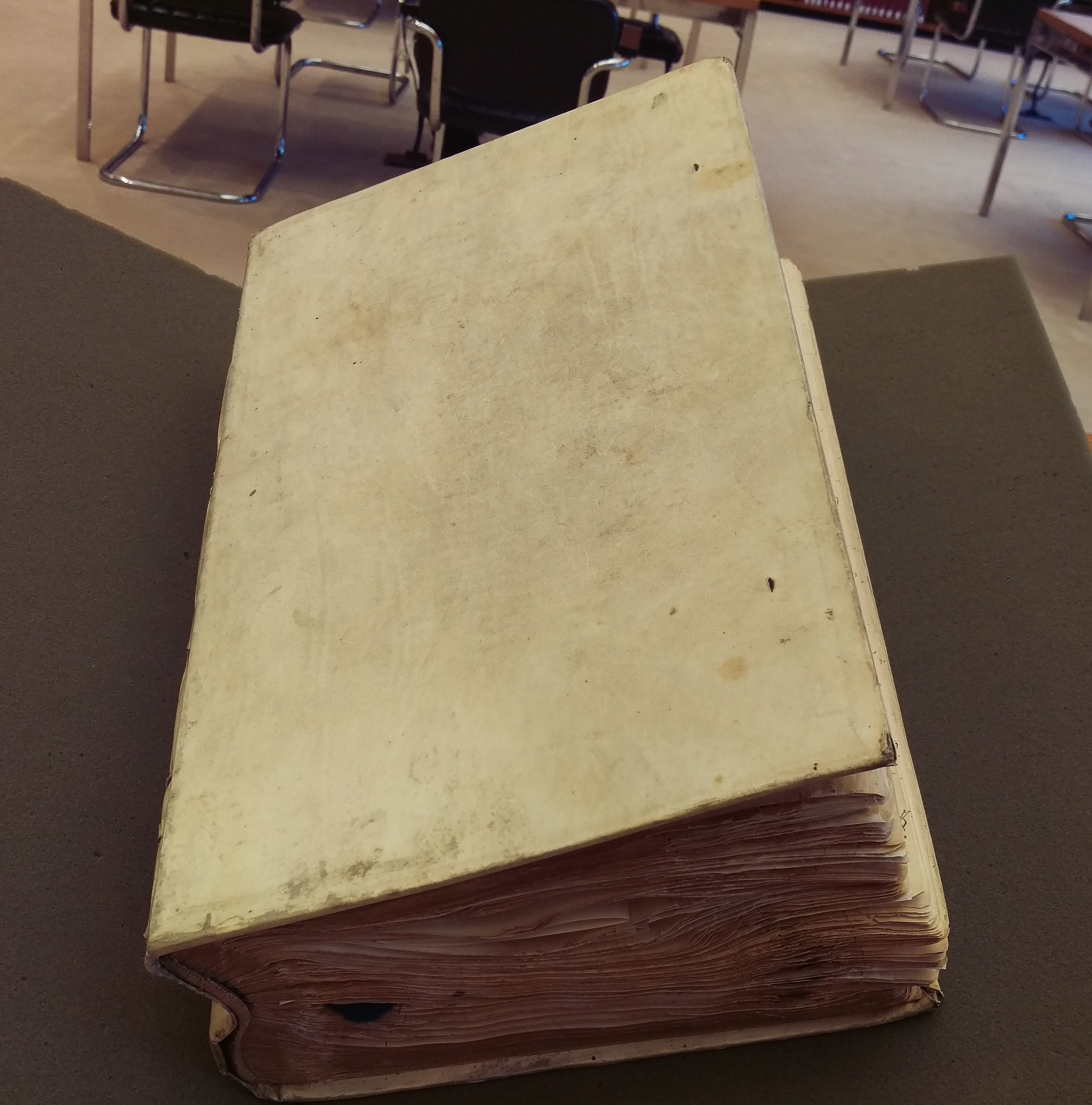
William Butt began his dye book on November 24, 1768. As a clothier, Butt oversaw the entire process of producing a woolen textile from cleaning the raw fibers to weaving the fabric. Yet his book, the product of almost daily work, is just about dyeing. Why then did Butt devote so much effort to just one step in the manufacturing process? The answer is simple: half the price of a finished textile could come just from the quality of its dyeing. It was not uncommon for clothiers to set up their own dye houses, unwilling to trust someone else’s work with such a critical step. William Butt was such a clothier.
Between 1768 and 1785, he recorded 794 recipes, filling over 88 pages with rows and columns of cryptic numbers, strange symbols, bizarre ingredients, and round little pieces of colored felt, stuffing little scraps of paper between its pages. After weeks and months of pouring over the book in the reading room of the Beinecke Library, I made some sense of the book; each row documents a new recipe, and each column contains a separate piece of information about the recipe. In this way, Butt recorded the amounts of wool he worked with, the merchant marks of his wool suppliers, and the dyestuffs used in each recipe, always providing samples of the results and assigning a unique recipe number.
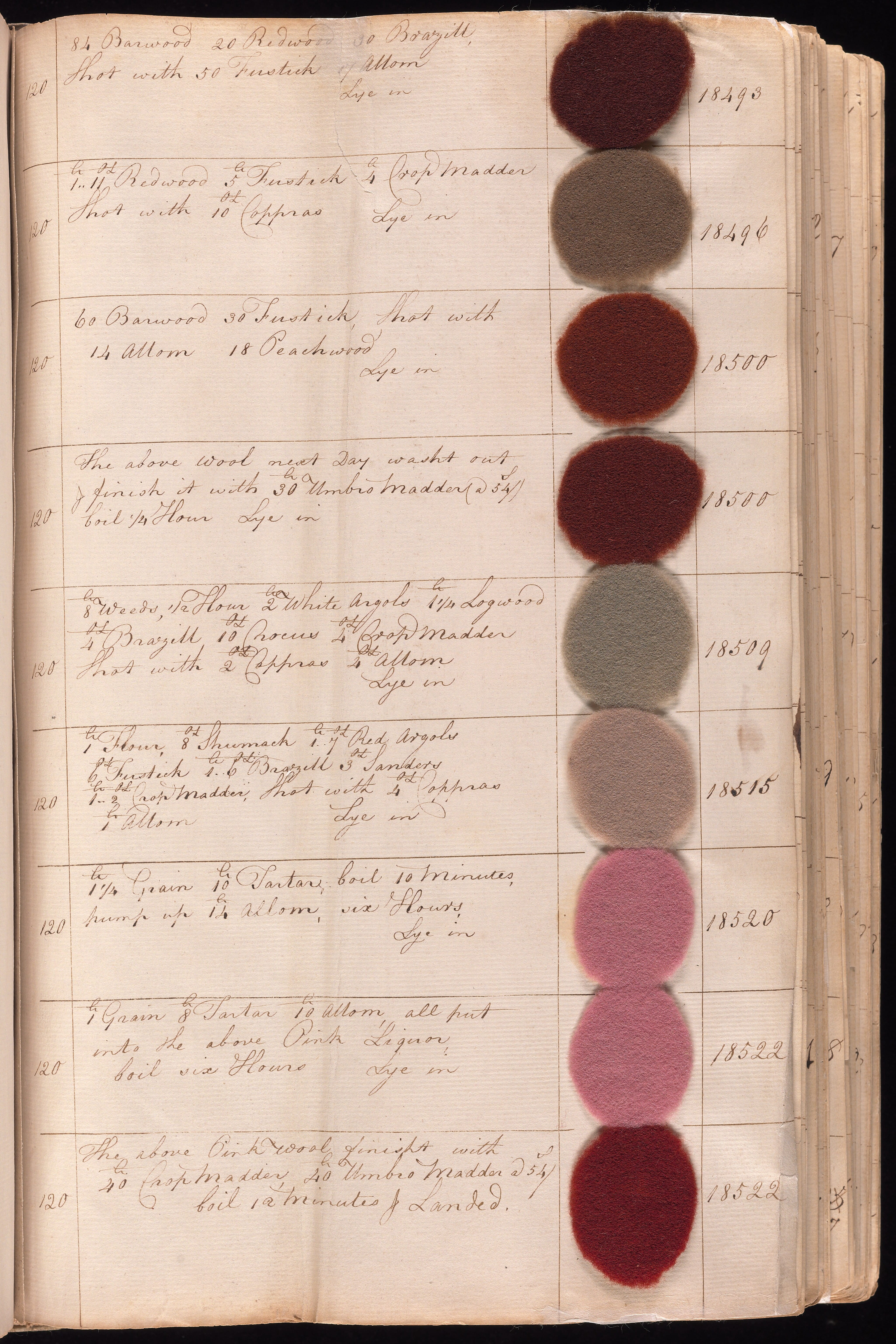
The book shows that Butt was able to dye more wool with better results by systematically experimenting with his dyes. Starting around 1777, about page 35 of his book, Butt began to treat his book less like a cookbook of collected recipes, and more like a lab notebook to record his experiments. He started dating his recipes, and the dates suggest that Butt began to intensify his production. Butt filled 35 pages between 1768 and 1777. Assuming this was his only dye book, this means he only filled 3 or 4 pages a year during this period. However, after 1777 he usually filled at least 6 pages each year.
| Number of Pages Filled by Each Year in William Butt’s Dye Book Between May 1777-May 1785 | |
| Year | Approximate Number of pages filled |
| 1777 (May-December) | 6 |
| 1778 | 6.5 |
| 1779 | 8 |
| 1780 | 6 |
| 1781 | 7 |
| 1782 | 6 |
| 1783 | 6.5 |
| 1784 | 5 |
| 1785 (February-May) | 3 |
Not only was Butt working with more recipes but he also became more meticulous in his work. He got pickier about how he classified a new dye recipe by assigning a new dye number to recipes that varied only slightly from other recipes in the book. He began experimenting with his recipes, recreating previous recipes using wool from different suppliers, for example. In another instance, he experimented with technique, noting that recipe 20129 was the same as 19917, “differing from 19917 in method only.” His book gets more cluttered as he began recording the merchant marks of the merchants who supplied the wool in each recipe, and as he makes more notes and comments.
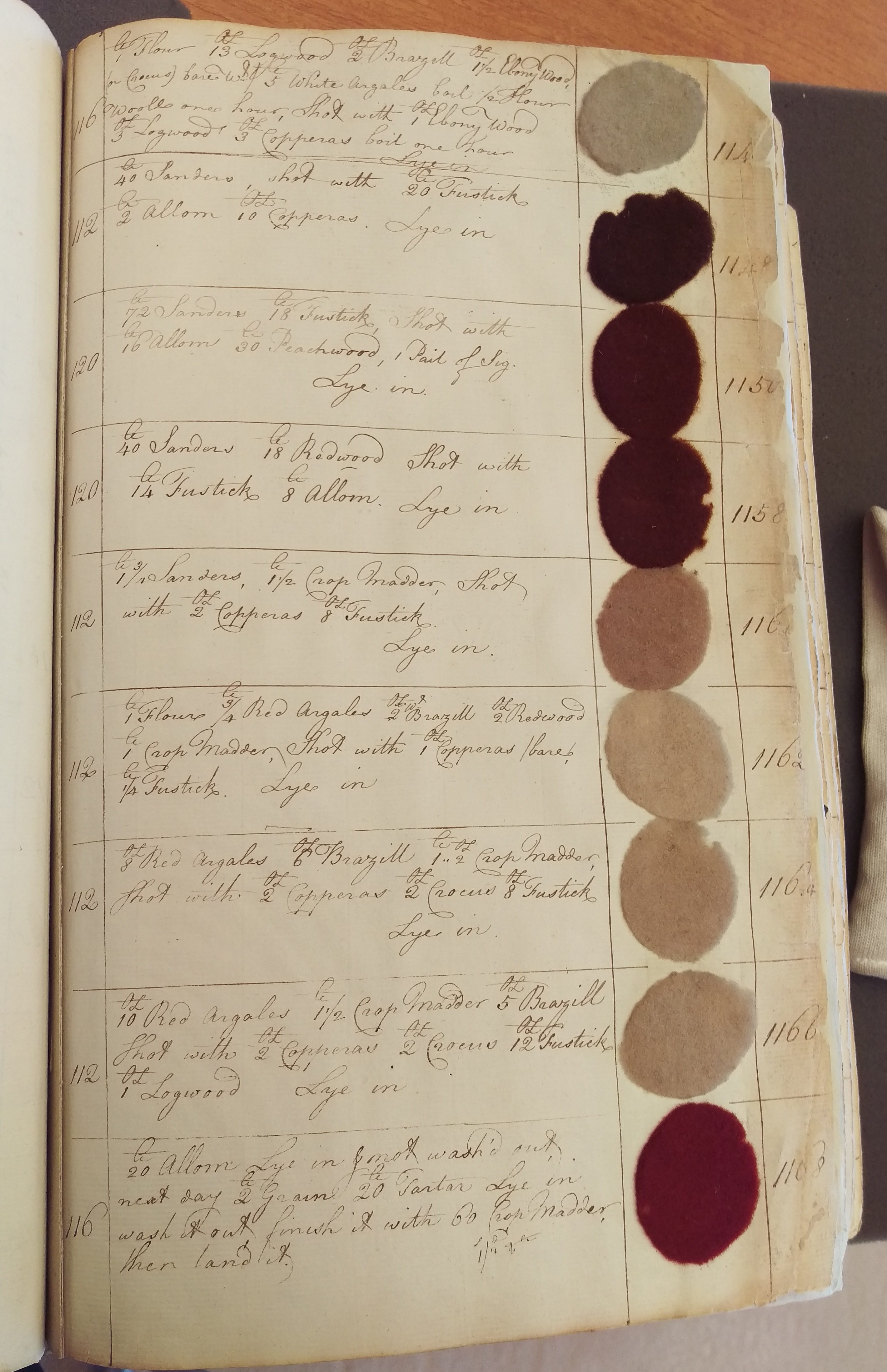
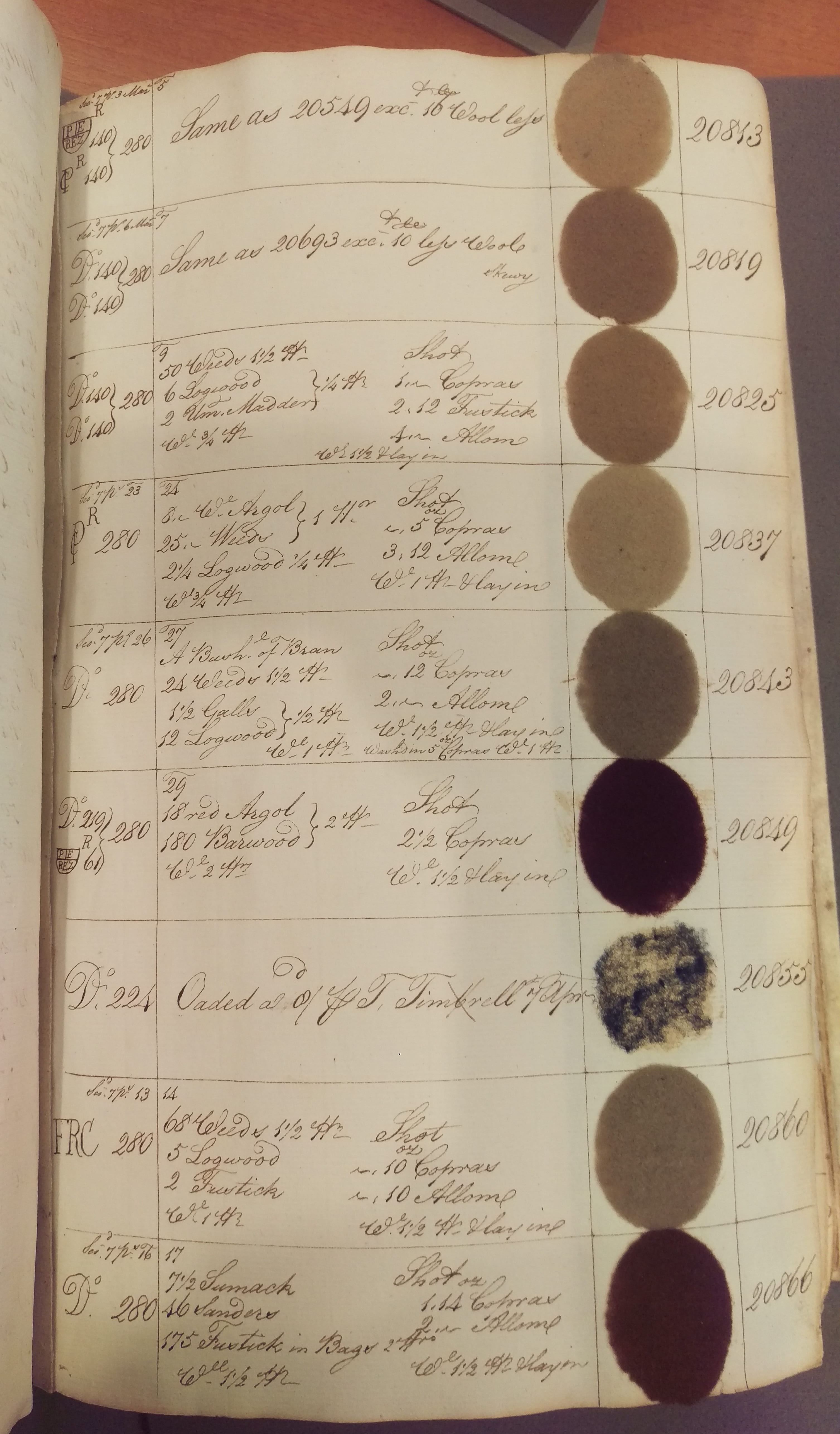
Part of Butt’s success may have come from the fact that he seems to have been a specialist. He was clearly skilled at using many dyestuffs, but he relied on other dyers to provide him with indigo-dyed wool. Indigo is a vat dye, which has an entirely separate chemical process for bonding to fibers than the other dyestuffs Butt worked with, which were almost exclusively mordant-dyes. Not all dyers specialized, but there is evidence that indigo specialists were common, and so it is not surprising that Butt would also specialize in one type of dye. By focusing on dyes that all required similar methods, Butt was able to refine those methods and increase his efficiency. By the end of his book, Butt had more than doubled the amount of wool he dyed in each recipe.
Technology was at the heart of the Industrial Revolution, but, as Butt’s dye book illustrates, if all we imagine when we think of technology is machines, we are missing a large part of the picture. Technology is simply the practical application of scientific knowledge, and in this sense William Butt’s dye book is as much a piece of technological advancement as the spinning jenny and the power loom. He could not have known the chemistry underpinning his work, but he knew he could maximize his output by systematically experimenting with dyestuffs and applying what he learned to his processes. All the spinning jennies and power looms in the world would have been useless if all those threads and fabrics could not be consistently and reliably dyed, but dyeing at larger scales required a better understanding of the dyes, not new machines. Butt and the many others like him understood this. Hiding in record offices and archives, there are other dye books, all written by clothiers and dyers trying to master dye processes. It was their mastery of process that achieved the consistency that I take for granted every time I browse a wall of socks.
Lidia Plaza is a PhD student in British history at Yale University. Her research focuses on industrialization and British foreign policy in the late eighteenth- and early nineteenth-centuries.
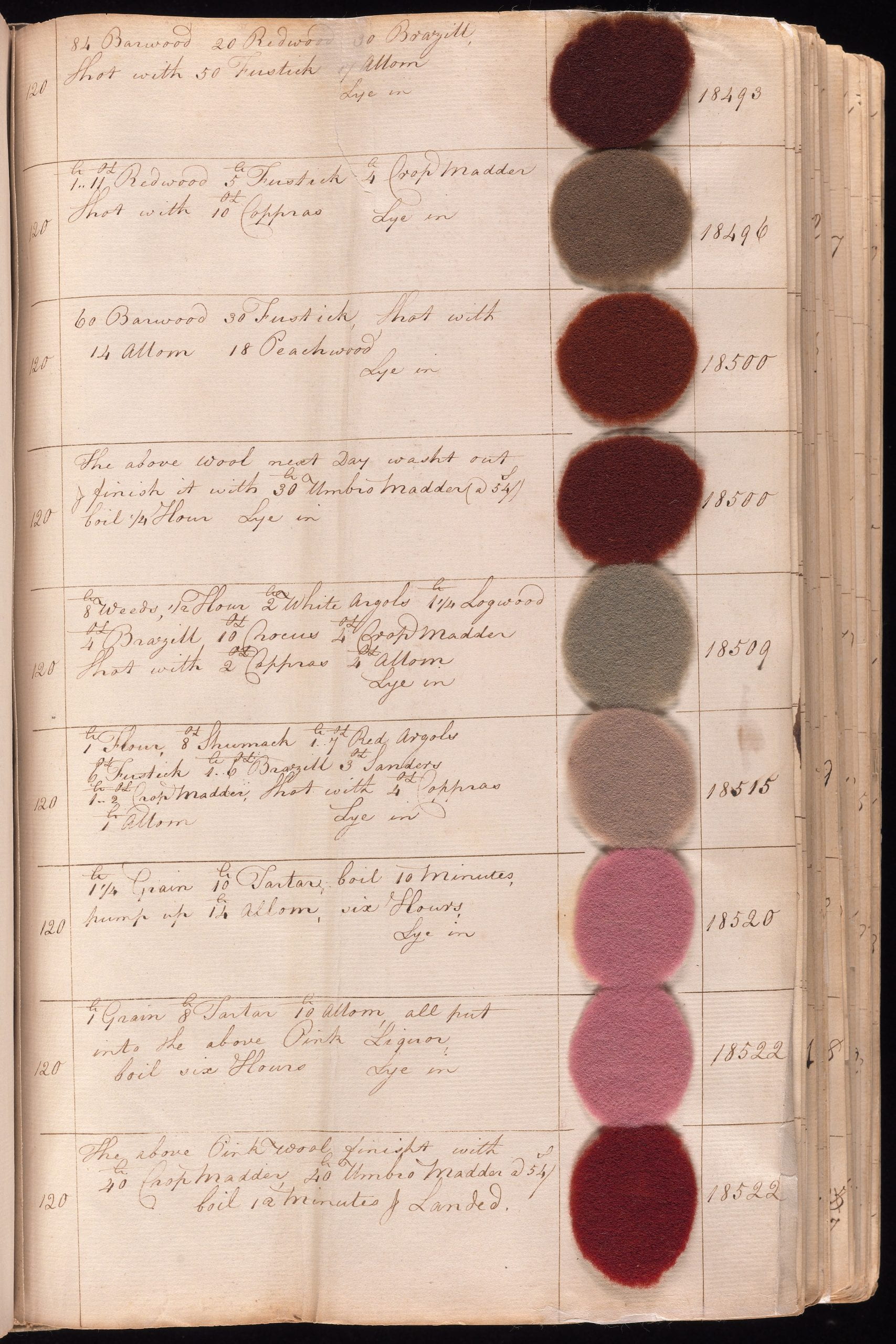



November 5, 2018 at 7:49 am
Thank you for this highlighting this very interesting source. In our fast-fashion world with so much textile production pushed to the developing world, it’s difficult to imagine how much effort and wealth was devoted to the production of cloth and clothing in the early modern and early industrial eras, but your analysis here of Wm. Butt’s dye book helps us understand his world and the reasons for his careful attention to his dye recipes.